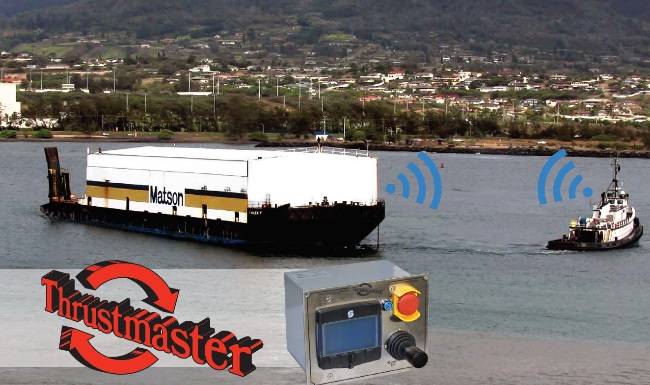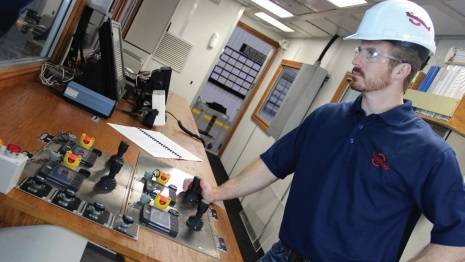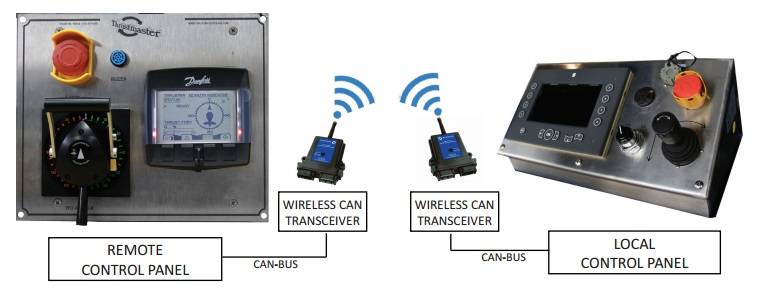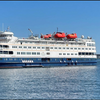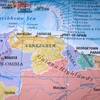Thrustmaster of Texas, Inc. has been supplying wireless remote controls for thrusters since the 1980s, offering products that are supported through their lifecycles with upgrades that result from recent technological developments.
Breathwit Marine Contractors installed Thrustmaster’s wireless propulsion remote control system on a towboat in 1989. The controls allowed the towboat pushing the barge train to control an azimuth thruster on a bow boat at the very front of a large barge train, which is traditionally unmanned, and now gains pinpoint precision propulsion through river bends and turns thanks to the remote control system. Only when the bow boat was used as a fleet boat, switching barges through the locks one-by-one and when assembling a barge train or taking it apart at the loading docks was the towboat single-handedly manned on the bridge with the wireless controls switched off.
In 1992, Thrustmaster supplied a swing-up azimuth stern thruster to Matson Navigation in Hawaii for the oceangoing ro-ro barge Waialeale that carries containers, trailers, autos and heavy equipment. The Waialeale was equipped with a wireless propulsion remote control system in the tug towing the barge between the Hawaiian Islands. Fast forward to today and the Waialeale continues to efficiently employ the same reliable control system without issue during its operations, Thrustmaster said.
With the recent advancements in electronics and data communication technologies, today’s wireless remote controls are much simpler, more reliable and less expensive than the old systems of the early 1990s. Thrustmaster claims a position on the leading edge of remote thruster control technology as reflected with the latest upgrades to its wireless propulsion remote control system.
According to Thrustmaster, its wireless propulsion remote control system feature simple and intuitive for crew to use, reducing risk of error and increasing safety; ergonomic control levers and modern touch screens integrate in existing vessels as minimal space is required; meets FMEA requirements for DP operations by switching automatically between normal and backup control to provide redundancy of azimuth control; and global 24/7 product support available from Thrustmaster’s service network.
A drop-in style bridge control panel is provided for recommended installation in the bridge of the vessel. The control system is electric over hydraulic based on 24 VDC supply. The panel provides all operating interfacing for normal functions of the control system.
The local control panel is installed inside the hydraulic power unit for each thruster and provides for thruster steering, raising and lowering operations, alarm annunciation and digital display of operating parameters.
Wireless communication can be achieved between Local and Remote control panels using a wireless transceiver, which is a 2.4GHz wireless data link, without the need for interconnecting wires.
The wireless module transmits and receives all CAN messages present on the CAN-BUS just as if they were connected with wires, providing dependable control and fast performance.
Thrustmaster noted the wireless module has several features for fast and easy communication between the panels. These include fast response time (messages are transmitted and received in less than 20 milliseconds); wide operating voltage range of 12-48VDC; communicates over long ranges, 1,500 ft to 2,500 ft (460 m to 762 m); reduced field service and maintenance costs; LED lights for diagnostics and system status; rated NEMA 4 (IP67), sealed to withstand harsh environments; and reliable in crowded RF bands with Frequency Hopping Spread Spectrum (FHSS) technology.






